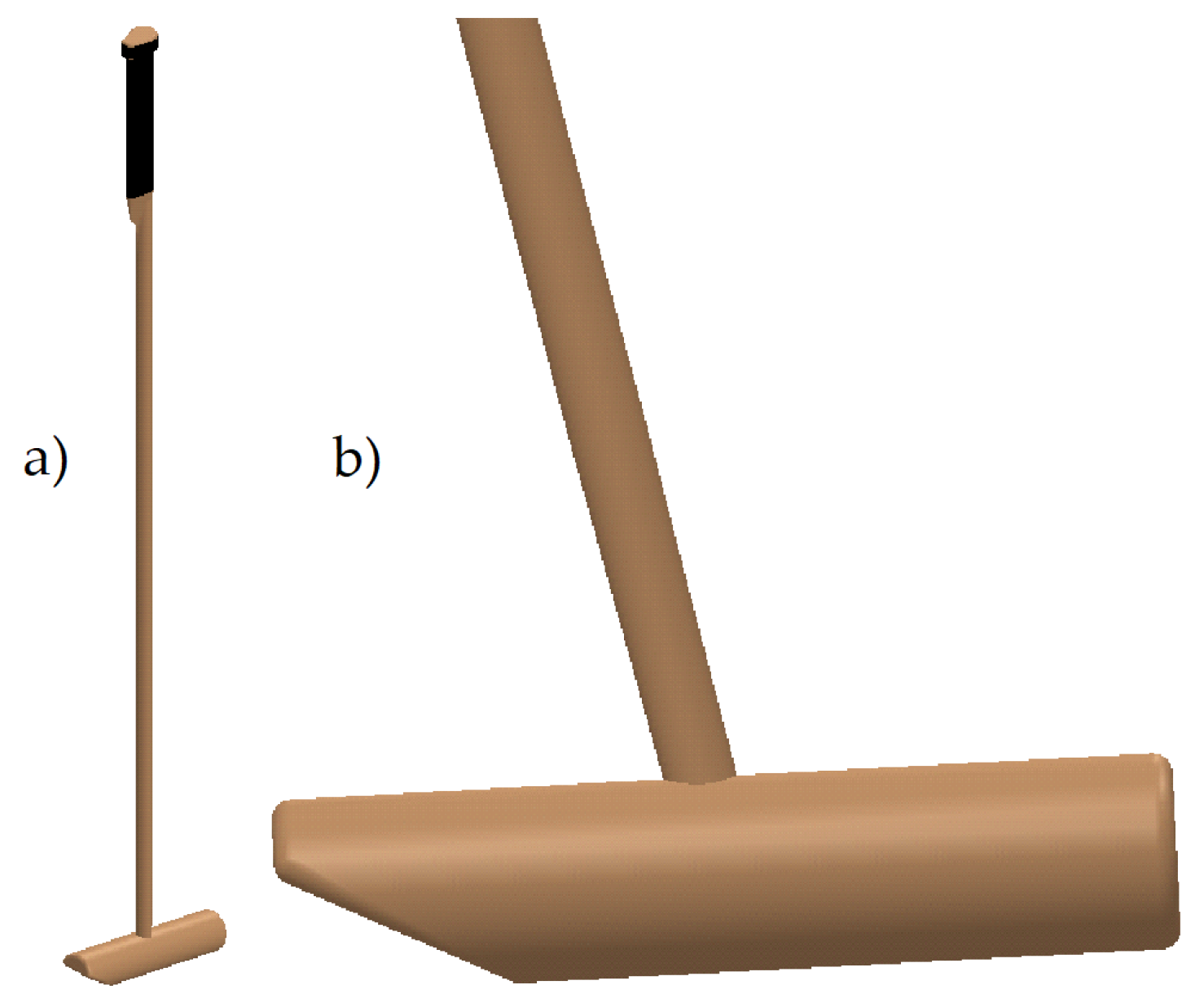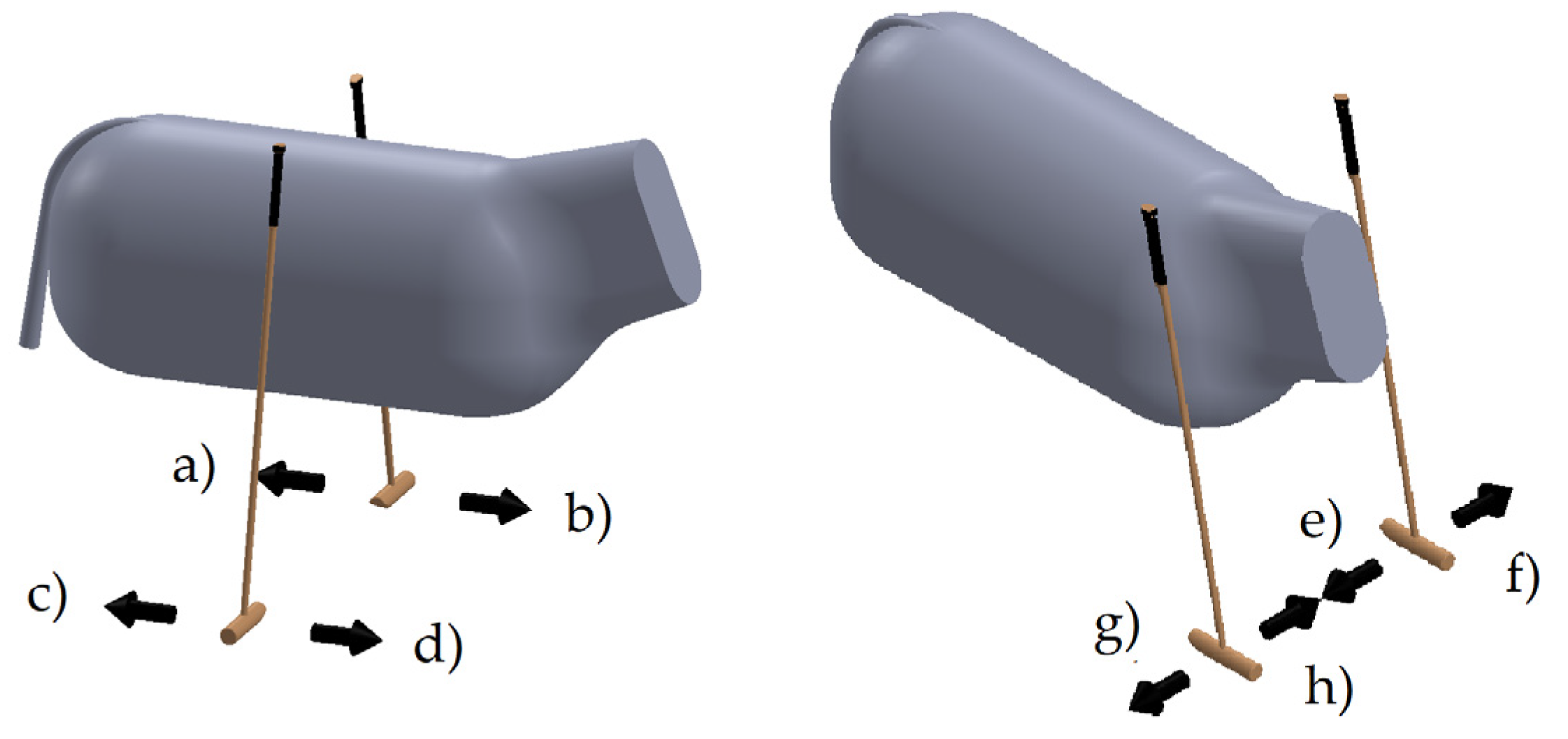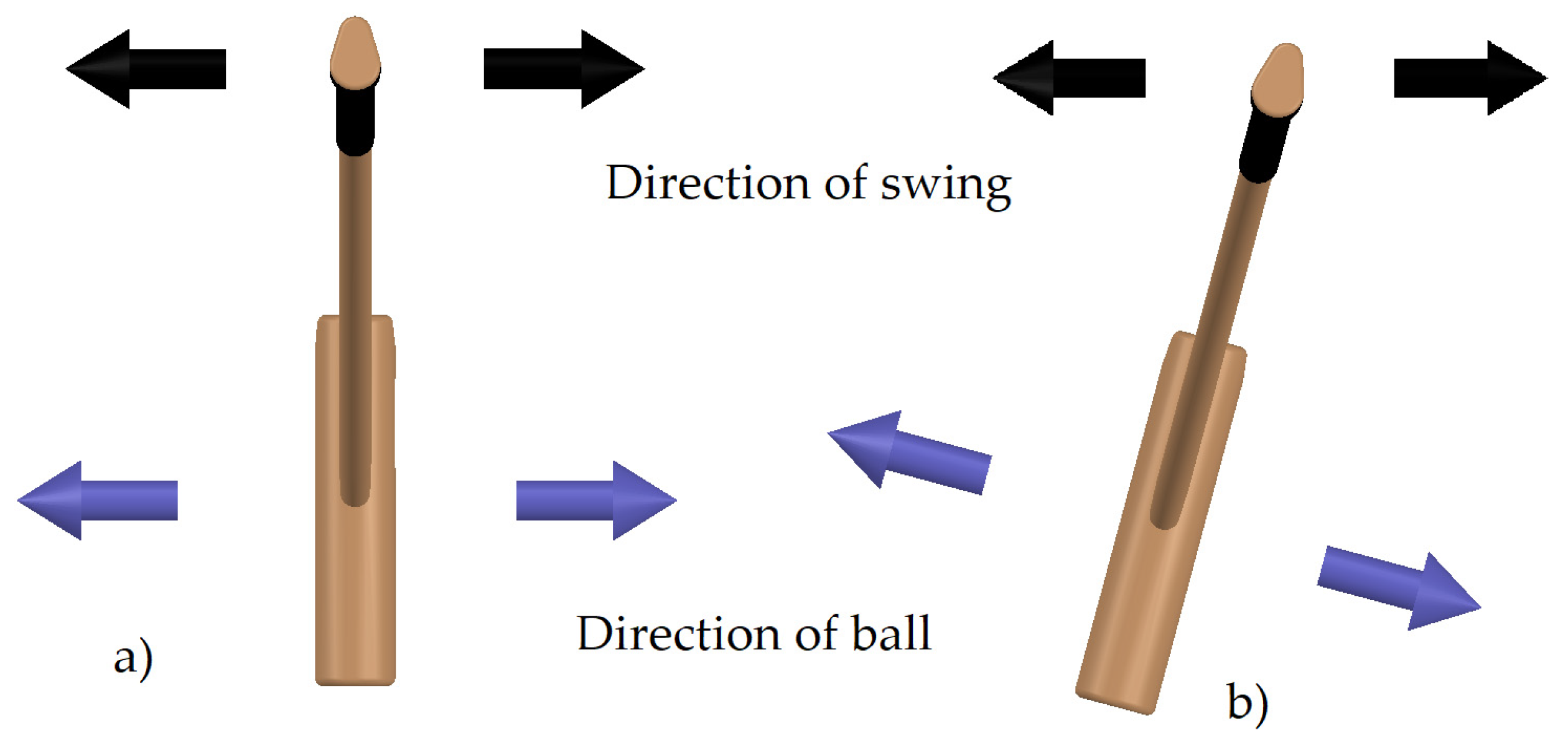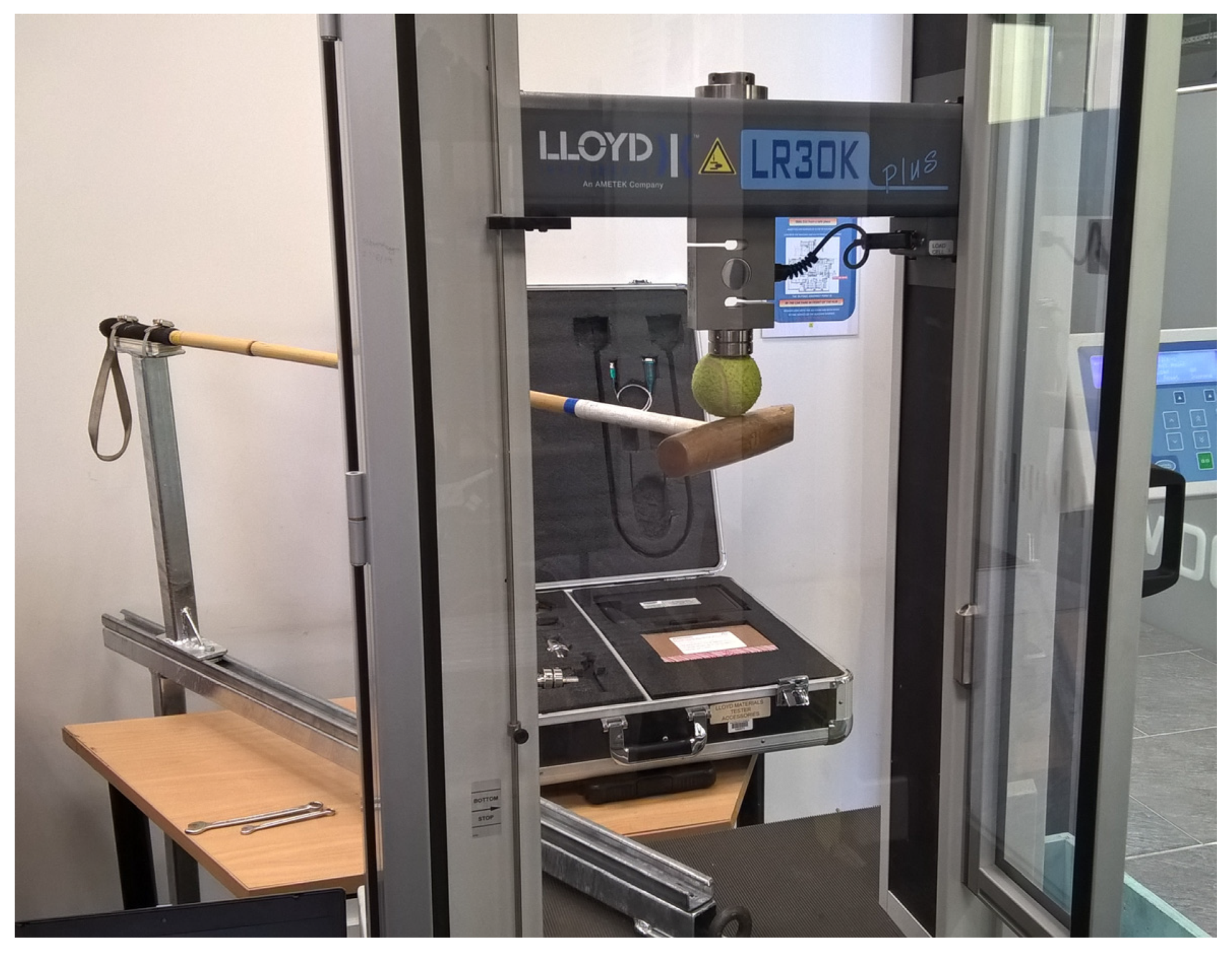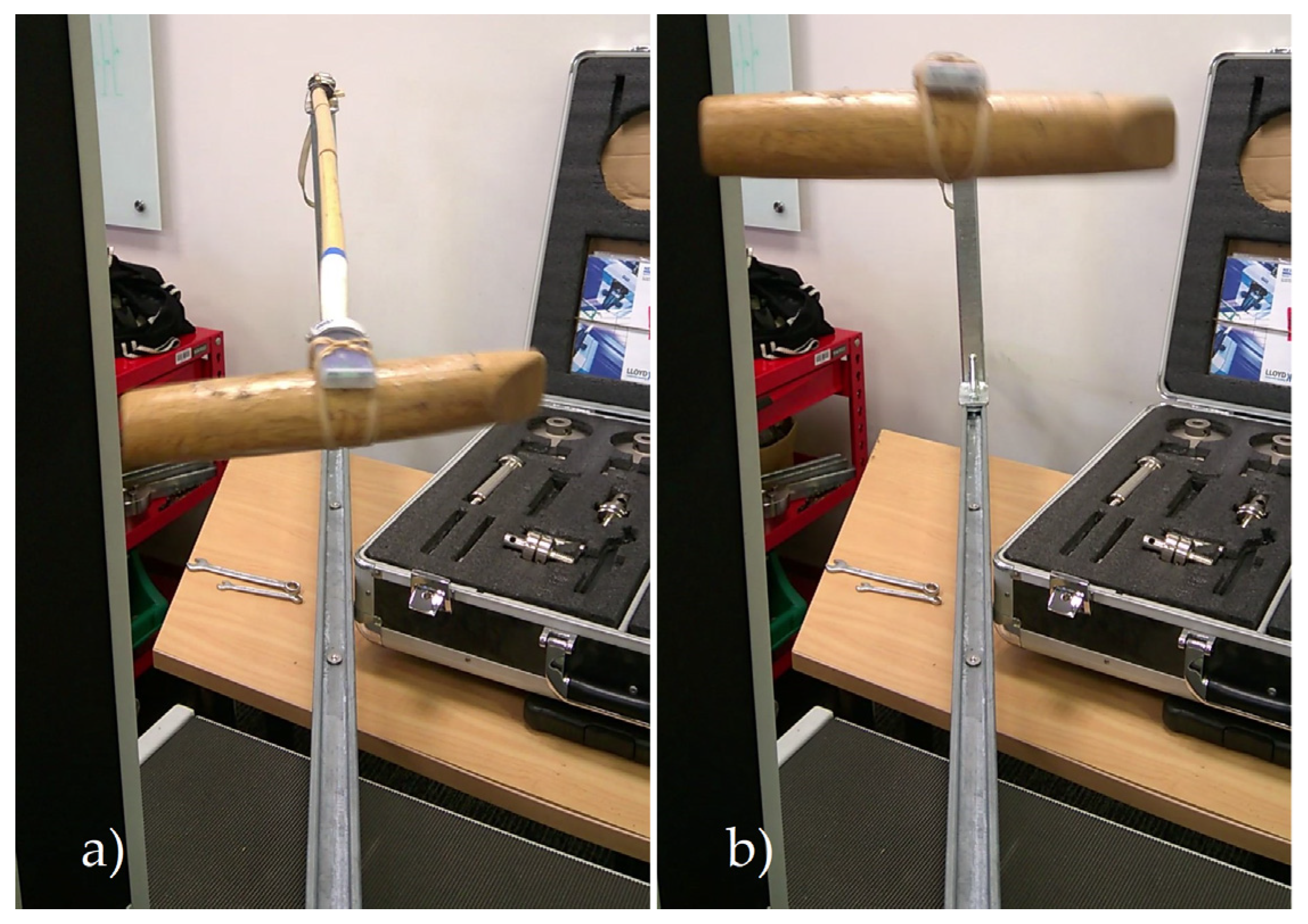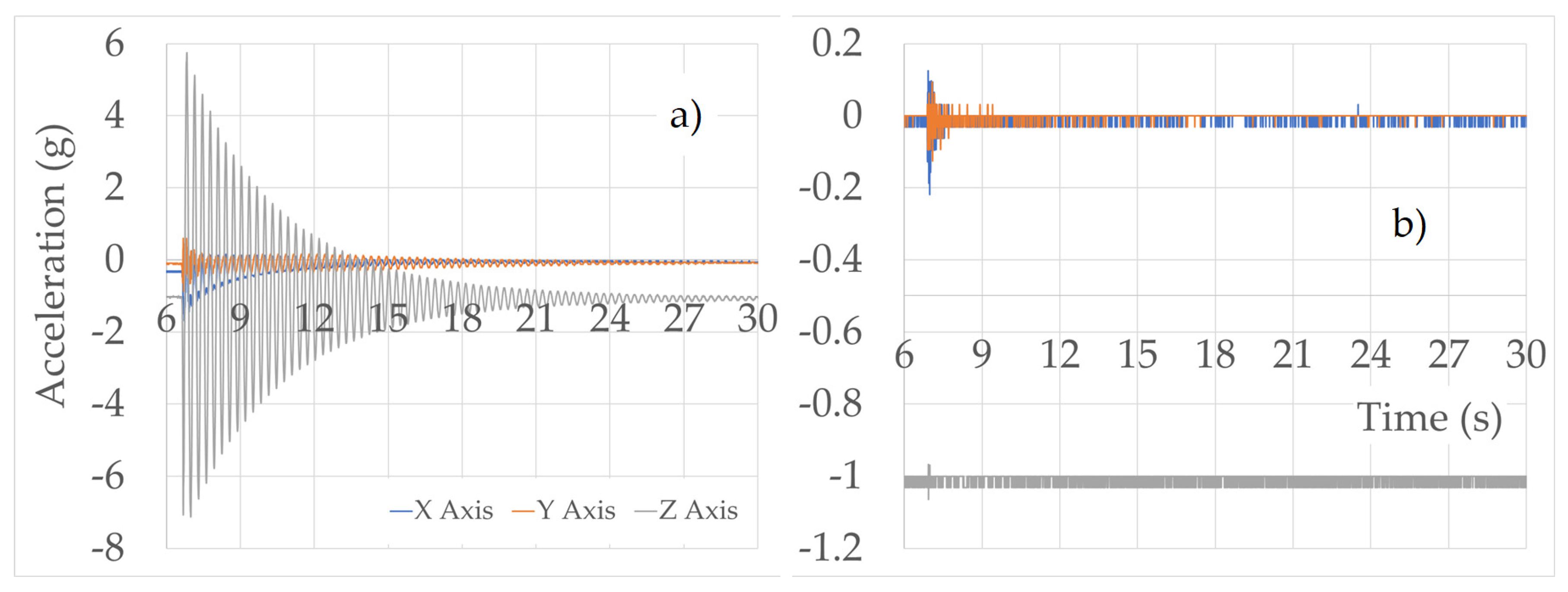1. Introduction
Literature is scarce for equestrian polo despite its global appeal and the high value of the game in terms of historical reach and investment by the polo community [
1]. There is an international federation, and as with other high-level sports they are subject to the rules and regulations of the World Antidoping Agency (WADA) [
2]. Safety is a major concern within polo, and this is reflected in the rules as not only the welfare of the players but also the ponies must be considered [
2].
The game is played with a maximum of four players per team on the field at any one time. The nominal field size is 275 (goal to goal) x 183 m (width) with safety zones of 30 m each end and 10 m each side also required. The players manoeuvre about the field on ponies and use a mallet (stick) to guide the ball (76 to 89 mm diameter). Each team is allocated points based on sending the ball through a goal at the appropriate end of the field with the goal marked by posts 7.3 m apart and 3 m high [
2].
The game is also unique in sports due to the multiplicity of interactions [
3,
4]. These interactions can be considered between the player and their pony, the pony and the ground, the player and their stick, and the stick and the ball. Regarding the player and their stick, the international polo association rules [
2] state that all players must hold the stick in their right hand. This is unique in stick sports in that it would seem to disadvantage players with a left-arm bias. However, the interaction of the player and their pony ensures that the direction of swing and the type of shots taken by all players are dynamically the same. Scoring is achieved by guiding the ball past the opposing team and between the opposition’s goal posts.
Applying engineering physics [
5] such as Newton’s principles of motion gives a fundamental account of the kinetics of play. As the first part of a wider study of the game, these theories lead directly into the modelling and characterisation of the materials and performance of the stick. While no deeper investigation is done here, the dynamics of swing are being studied and will be presented in a later study. The stick is the focus in this early work and therefore requires investigation of a static nature. This includes measuring the material properties of each part of the stick and the physical properties determined by the design and construction methods.
The polo community are largely traditionalist with the design style and equipment materials remaining the same for many years [
6]. This is seen in two of the most important pieces of equipment, the helmet, and the mallet. Unlike cricket bats and tennis rackets, polo does not have strict regulation of the mallet. The geometry of the stick and the materials used in its manufacture are only restricted regarding safety of player and pony. Traditional construction sees the preferred shaft made from a cane, a handle, and a head crafted from hardwood. The favoured cane (rattan) is produced in tropical South and Southeast Asia [
7,
8,
9,
10]. Rattan is a native climbing palm grown in natural forest stands [
8,
11]. Although it is known to have short harvest time compared to other timber species [
8,
12], it is considered to be in severe decline due to habitat destruction, changes in cultivation practices, regional degradation, and wasteful and intensive harvest practices [
11,
13,
14].
The CAD model in
Figure 1 shows (a) the mallet handle, shaft, and head and (b) the generic connection of the head and shaft. When the ball strikes the side of the head during the shot, the point of impact, the line of action, and the direction of both are critical to the subsequent trajectory.
The materials and construction of the stick are key components in the analysis of performance and will also influence player performance. As previously shown, there are multiple interactions to consider in polo, there are also multiple connections or chains within each interaction [
15]. For the player–stick interaction we first consider motion of the stick and from this we determine a suitable kinetic theory through which to determine the reactions and responses of the stick. As the motion of the stick has been seen to be driven through biomechanical asymmetries, it should be logical to test the stick under load relative to a standard six degrees of freedom (6Dof) model. This would enable gradually applied and dynamic loading conditions to be measured and would be repeatable.
2. Graphical Interpretation
To determine the six degrees of freedom (6Dof) methodology, the planes of action are determined. The intent is that each line of action will be represented by a vector quantity in later predictive modelling work to enable determinants to be produced relative to those planes. They can then be consistently related to the player and position of the stick.
Figure 2 shows standard shots taken parallel with the medial line of the pony. The right side of the pony, referred to as the offside, is the side used to hit the ball when an opponent is on the left, while the left side is the nearside, the side used to hit the ball when the opponent on the right side. The swing is known as forehand (
Figure 2a,d), where the palm of the hand leads the shot, while the backhand (
Figure 2b,c) sees the back of the hand leading the shot. More difficult shots, such as the neck shots, (
Figure 2e–h), and belly and tail shots, where the rider hits the ball laterally to the medial line, avoiding the ponies’ legs.
When striking the ball, the direction of trajectory of the ball is related to the angle of the head on impact. The striking face is the side of the head not the planar front face. As shown in
Figure 3a, the ball will travel straight when struck perpendicular to the stick head. When the stick head is angled to the direction of swing (
Figure 3b) the ball will travel at an angle relative to the direction of swing.
From the above models we can then determine the testing method for the mallet. The direction of loading is related to both the direction of swing and the ball trajectory. It is also dependent on the physical property being measured, i.e., velocity or strain. Initially, the stiffness of the stick shaft was considered through both dynamic and quasi-static tests. Once this was understood the relation to impact and varying factors such as speed of the swing and momentum of the head could be included.
3. Testing Methodology
The first test is a gradually applied load, perpendicular to the stick head, in a vertical direction, as seen in
Figure 4. This quantifies the resistance to load of the shaft in a controlled environment and will enable a comparison to the material properties of the cane. The test has a deflection limit of 200 mm and varying crosshead speeds (125, 250, 500 mm/min). The resulting data were maximum load (N) and deflection distance at maximum load (mm). These results are used to determine stiffness of the shaft for both the forehand and backhand direction of swing.
The second test is a measure of the resistance to motion and is a dynamic test. The head is displaced by 200 mm below the horizontal line of the handle and released. Due to the internal resistance of the shaft, the head will return to the horizontal plane before travelling past to a maximum displacement above the horizontal line and continue to oscillate until it comes to rest.
Figure 5 shows the head at (a) the bottom of a cycle and (b) the top of the cycle. The resulting data are collected using inertial sensors at the head and the handle in the form of acceleration (g) and time (s). These results can be used to determine damping of the shaft for both the front and back direction.
4. Discussion
The rationale for this study is that an in-depth investigation of the polo stick from a materials perspective will allow a benchmark to be developed to aid in the prescription of sticks for the player based on equipment performance. Traditional polo mallet materials and construction are like those of the cricket bat, with the use of natural materials comes seasonal and locational variability of properties. The use of a testing methodology will enable quantification of the material properties and subsequent performance from these objective data will provide a consistent measure for players.
As part of a larger project investigating the engineering perspective of equestrian polo, the rationale is that once the material properties are known they can be used in conjunction with theories of motion to determine a predictive model. The model will also require testing for validity and so a full and comprehensive data set is required based on a repeatable methodology. The testing methodology is the first part, and as seen in the following sections, the resultant data will characterise the individual sticks.
Table 1 shows the data taken from the quasi-static load test on the back and front of the head of the mallet. This provides an equivalent stiffness value [
keq] [
16] for the mallet shaft, which can subsequently be analysed with respect to the elastic modulus of the rattan cane.
The dynamic testing of the stick was measured by inertial sensors mounted on the head and the handle and provided data as shown in
Figure 6. The response seen in
Figure 6a is a typical damped system, which is formed through the energy loss due to the internal resistance of the shaft to the deflection. The handle, shown in
Figure 6b, has a small response due to the fixed restraint at the mount.
The damping is quantified by the coefficient dependent on the stiffness and mass of the head and any applied force as [
17]:
where
m = mass,
x = distance from initial location,
c = damping coefficient,
k = stiffness,
F = applied force, and
t = time.
In similar fashion to other ball and bat sports, the player manoeuvres into the best position possible to strike and launch the ball through fixed goal posts. From a theoretical perspective Newton’s principle of motion allows a deeper understanding of the interactions of the player and the stick. The graphical observations (
Figure 2 and
Figure 3) show the parts of the stick, the materials used and their properties, the fully assembled stick, and the basic shots learned by all players. Performance analysis and the concepts are further developed by application of the theory of motion to each shot. In a later study a predictive model will be constructed from these first principles to analyse player motion and support enhanced performance.
5. Conclusions
The mallet (stick) in equestrian polo is crafted and used in a similar fashion to other stick (bat, club, racket) and ball sports. This study reviewed and proposes a methodology for benchmarking the properties and performance of the stick using static and dynamic testing.
Static testing produces a value for stiffness (k), and the dynamic testing produces a damping coefficient (c). These quantities will enable a quantitative measure for the properties and performance of any stick and thereby remove the subjective nature of assessment.
